Recap – The Entire “Speedmaster Chronicles” Series and a Comprehensive Speedmaster Timeline
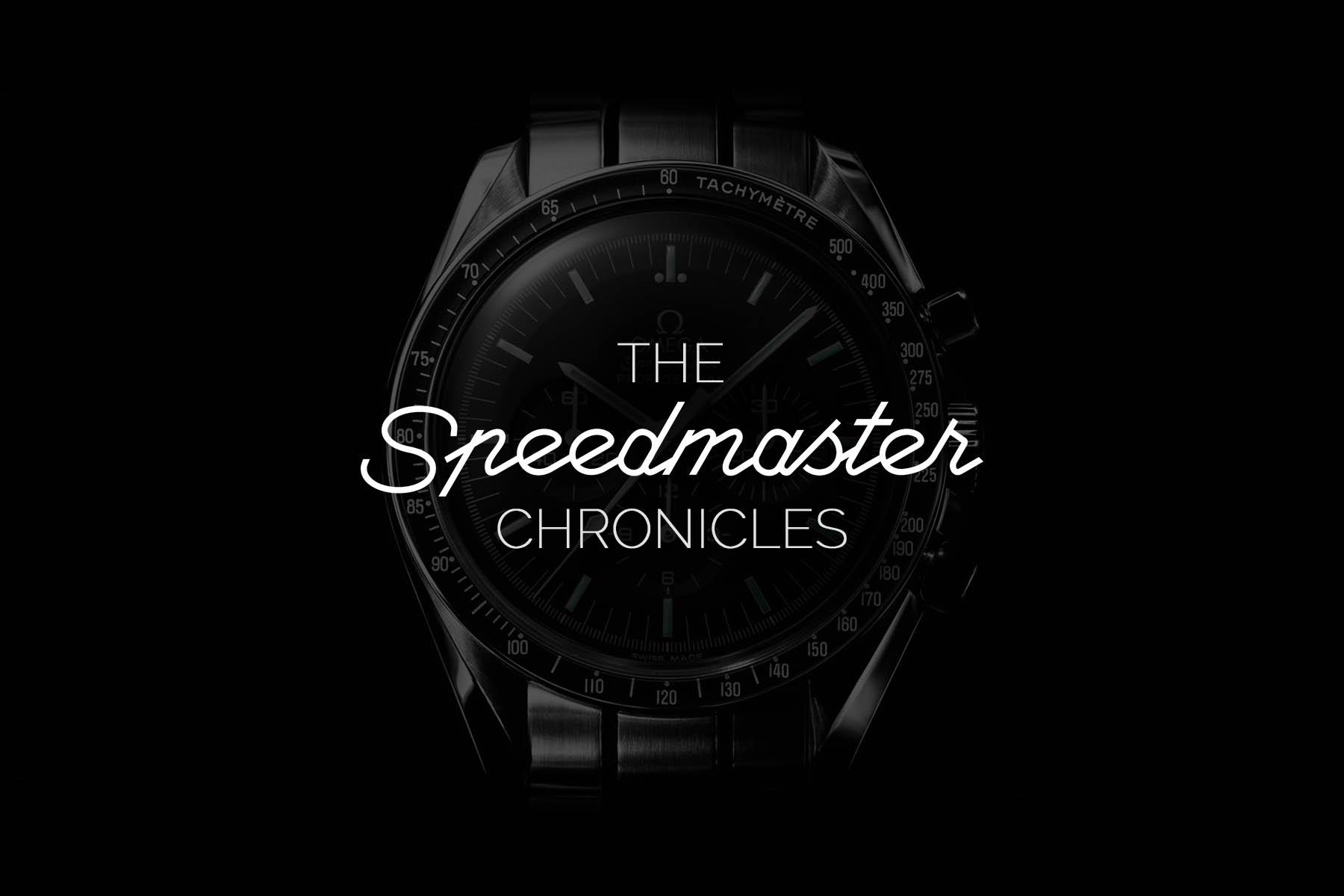
Recently, we had the pleasure to publish what has been one of our most demanding projects of the year, “The Speedmaster Chronicles”. We wanted to celebrate an icon of the watchmaking world, a watch that is known by most of us, a watch that carries an immense history, a watch that made it to the moon and, overall, a dream machine. You name it: the Omega Speedmaster. 5 movies, 5 guests, 5 points of views, all with a personal look at the Speedy. Today, we wanted to recap this series of videos in one single article, and also to bring a comprehensive and user-friendly Speedmaster Timeline, looking back at the main models and the evolution of this watch from 1957 to today.
This project started with a simple idea: how to celebrate the 60th-anniversary of the Omega Speedmaster, in our own way, with our own perspective and with a unique approach. The idea, which we created together with Omega, was to have a look at all main aspects of the watch, through the eyes of those who have experienced it. We wanted to have the NASA/Moon-landing story from the man who certified the watch, we wanted to hear the man responsible for “Speedy Tuesday” and the related limited edition, we wanted to hear a seasoned collector, we wanted to have an auctioneer’s perspective and finally, we had to have Omega’s CEO point of view on the how to manage such an icon. All of them immediately agreed to jump aboard this project, which resulted in an intimate and passion-driven series of videos. And here they are…
The Speedmaster Chronicles
Episode 1, James H. Ragan – The first episode is a tribute to the greatest part of the Speedmaster’s history: the Moon-Landing and how the Speedy became the Moonwatch. In order to understand how and why this watch was selected by NASA and by astronauts, we invited James H. Ragan, Former NASA Program Manager and Aerospace Engineer – or the man who tested the Speedmaster and who gave it the “Flight Qualified By NASA For All Manned Space Missions” certification, allowing the Speed to finally make it to the Moon.
Episode 2, Robert-Jan Broer – For the second episode, which was published on a Tuesday (you see where this is going), we had the pleasure to welcome RJ Broer, a fellow watch-journalist with a true passion for the Speedmaster, and the man responsible for the creation of the Speedy Tuesday movement, as well as the initiator of the Omega Speedmaster Speedy Tuesday Limited Edition. In this video, Robert-Jan explains how this whole project came to life.
Episode 3, @VintageWatchzilla – We couldn’t talk about the Speedmaster without looking at it from a vintage, collector’s perspective. Our guest for the third episode decided to remain anonymous, yet he was proud to introduce his collection to us, as well as various tips for aspiring collectors. @VintageWatchzilla (his Instagram pseudonym) has some pretty nice watches and the knowledge that goes along.
Episode 4, Aurel Bacs – For our fourth episode of the Speedmaster Chronicles, we wanted to look at the auction market (something capital when talking about such an iconic watch). Our guest for this movie was Aurel Bacs, auctioneer at Phillips Watches. The best surprise was that not only Aurel talked about his professional view on this piece of history, but this movie ended up to be much more personal than expected.
Episode 4, Raynald Aeschlimann – For the fifth and last episode of this series, we wanted to give the final word to the man who is the current guarantor of this iconic watch: Raynald Aeschlimann, President and CEO of Omega Watches, and a veteran of the Omega family. You’ll see, he knows the watch and he loves the watch. A businessman with true passion.
The Speedmaster Timeline
The Omega Speedmaster was created in 1957, as part of a trilogy of professional-oriented watches (alongside the Seamaster 300 and the Railmaster). First conceived as a racing chronograph, it has been in the collection ever since. What mainly characterizes the Speedmaster is its continuity and its integrity. The current model, the “Speedmaster Professional Moonwatch”, is in almost all points equal to the model launched in 1968, which didn’t differ much compared to the 1957 inaugural version. True to its origins, yet some changes are to be noted. Here is a user-friendly and comprehensive Speedmaster timeline, to sum up the main steps in the Speedy’s evolution.
1957 – Speedmaster CK2915 “Broad Arrow”
The very first Speedmaster, the CK2915, was designed as a racing chronograph. It was, back in the days, the first watch to have the tachymeter scale positioned outside the dial, on an external bezel – a revolutionary concept quickly accepted by the rest of the industry. This model is easily recognizable thanks to the “Broad Arrow” hands and the steel bezel engraved with “Base 1000” tachymeter scale. Produced between 1957 and 1959.
- Steel case, symmetrical straight design
- 38.6mm diameter
- Steel bezel, engraved with scale
- “Tachymeter Base 1000” bezel
- Flat and Black luminous dial, radium painted
- Steel “Board Arrow” hour and minute hands
- White Alpha sub-counter hands
- Steel, straight chronograph hand
- Applied Omega logo
- Speedmaster-only signature
- Calibre 321, column-wheel
- Small pushers
1959 – Speedmaster CK2998 “Alpha Hands” and “First Omega In Space”
The first evolution of the Speedmaster, the CK2998, mainly differs on two aspects: the bezel and the hands. No more steel engraved bezel but a black anodized aluminium insert with printed tachymeter scale. Also, the distinctive “Broad Arrow” hands have been replaced by pointy “Alpha” hands. This model was the “First Omega in Space” when astronaut Walter “Wally” Schirra wore the watch during the Sigma 7 mission of the Mercury Programme in 1962. Schirra had purchased the watch for his own use, without NASA being involved.
- Steel case, symmetrical straight design
- 39.7mm diameter
- Black aluminium bezel, printed with scale
- “Tachymeter Base 1000”, dot over 90 – also exists with pulsometer, decimal or telemeter inserts
- Flat and Black luminous dial, radium painted
- Steel “Alpha” hour and minute hands
- White Alpha sub-counter hands
- White, straight chronograph hand (also exists with “lollipop” hand)
- Applied Omega logo
- Speedmaster-only signature
- Calibre 321, column-wheel
- Small pushers
1963 – Speedmaster 105.003 Third Generation
The third generation of Speedmaster, the 105.003 or “Ed White” (as worn by this astronaut during his historic spacewalk, becoming the first American ever to do so), introduces several novelties. The dial wasn’t flat anymore but stepped. It was the first model to use tritium paint (T Swiss Made T) instead of the dangerous radium paint. It also introduced the white baton hands and the diamond-shaped second’s hand. Finally, the bezel was no more “base 1000” but “base 500”. The 105.003 was the one tested by NASA and James H. Ragan, to become “Flight Qualified By NASA For All Manned Space Missions”. it is the last of the “straight case” versions.
- Steel case, symmetrical straight design
- 39.7mm diameter
- Black aluminium bezel, printed with scale
- “Tachymeter 500” bezel, dot over 90 – also exists with pulsometer, decimal or telemeter inserts
- Stepped and Black luminous dial, tritium painted
- White baton hour and minute hands
- White baton sub-counter hands
- White, diamond-shaped chronograph hand
- Applied Omega logo
- Speedmaster-only signature
- Calibre 321, column-wheel
- Small or medium pushers
1964 – Speedmaster 105.012 Professional “Asymmetrical Case”
Launched in 1964, the Speedmaster 105.012 is noticeable as it introduced what is the main visual evolution of the Speedmaster, the asymmetrical case, with protected crown and pushers as well as twisted “lyre” lugs – a shape that is still used today. This is at this very moment that the Speedmaster became “Professional”. Compared to the previous model, no other major evolutions to note. This model is also important as being the true Moonwatch, as worn by Aldrin and Armstrong in July 1969, when landing on the Moon (on the wrist of Aldrin).
- Steel case, asymmetrical design, twisted “lyre” lugs
- 42mm diameter
- Black aluminium bezel, printed with scale
- “Tachymeter 500” bezel, dot over 90 – also exists with pulsometer, decimal or telemeter inserts
- Stepped and Black luminous dial, tritium painted
- White baton hour and minute hands
- White baton sub-counter hands
- White, diamond-shaped chronograph hand
- Applied Omega logo
- Speedmaster Professional signature
- Calibre 321, column-wheel
- Wide and short pushers
1968 – Speedmaster 145.022 with 861 Calibre
The second main evolution to be noted on the Speedmaster is mechanical and has been introduced on the ref. 145.022. This model, launched in 1968, introduced the calibre 861, the cam-operated evolution of the previous movement (less complex to assemble and more reliable). Visually, no major differences with the 105.012, with the exception of the back engraved with NASA and Moon mentions (as of 1969). This model will remain as such in the catalogue for close to 30 years – under several references: 145.022, 145.0022, ST345.0022 or 3590.50. All of them still had tritium dials. The bezel is slightly different, with a smaller font and the dot next to the 90 mark. The dial is stepped on early models and flat on later versions. Also, the dial now has a painted Omega logo.
- Steel case, asymmetrical design, twisted “lyre” lugs
- 42mm diameter
- Black aluminium bezel, printed with scale
- “Tachymeter 500” bezel, dot next to 90
- Stepped and Black luminous dial, tritium painted (until 1974) – Flat and Black luminous dial, tritium painted (after 1974)
- White baton hour and minute hands
- White baton sub-counter hands
- White, diamond-shaped chronograph hand
- Painted Omega logo
- Speedmaster Professional signature
- Calibre 861, cam-operated, 17 jewels
- Wide and tall pushers
1997 – Speedmaster 3570.50 and following
As of 1997, the Speedmaster becomes the watch we know today, with no further modifications after this step. The ref. 3570.50 or ref. 311.30.42.30.01.005 (in current collection) remains close to all the previous models, with two major evolutions. The first concerns the luminous paint used on the hands and indexes, replaced from tritium to non-radioactive Luminova. The second is the use of the Calibre 1861, an evolution of the 861 with 18 jewels instead of 17 jewels. The movement is also rhodium plated instead of copper or yellow-gold plated.
- Steel case, asymmetrical design, twisted “lyre” lugs
- 42mm diameter
- Black aluminium bezel, printed with scale
- “Tachymeter 500” bezel, dot next to 90
- Flat and Black luminous dial, luminova painted
- White baton hour and minute hands
- White baton sub-counter hands
- White, diamond-shaped chronograph hand
- Painted Omega logo
- Speedmaster Professional signature
- Calibre 1861, cam-operated, 18 jewels
- Wide and tall pushers

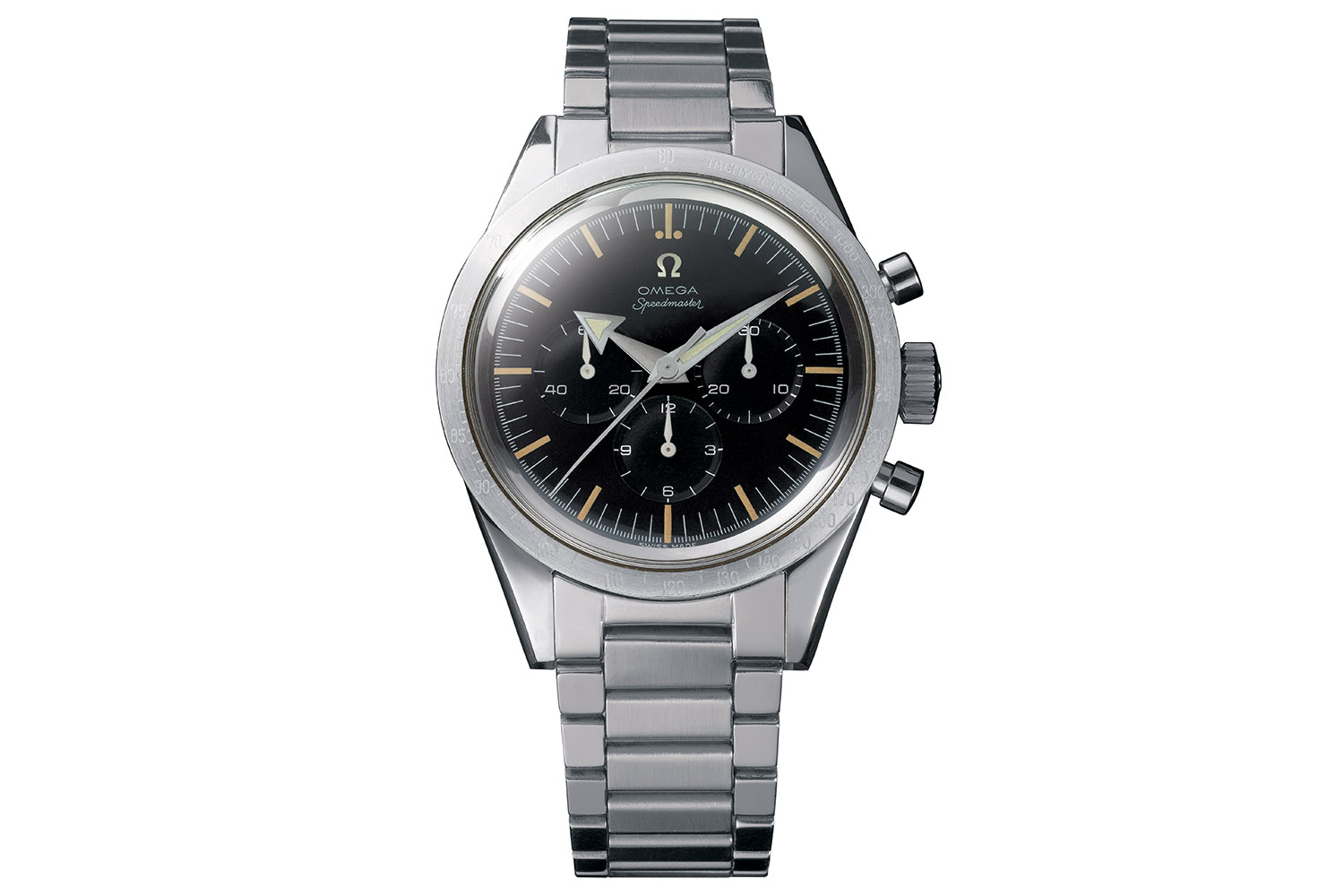
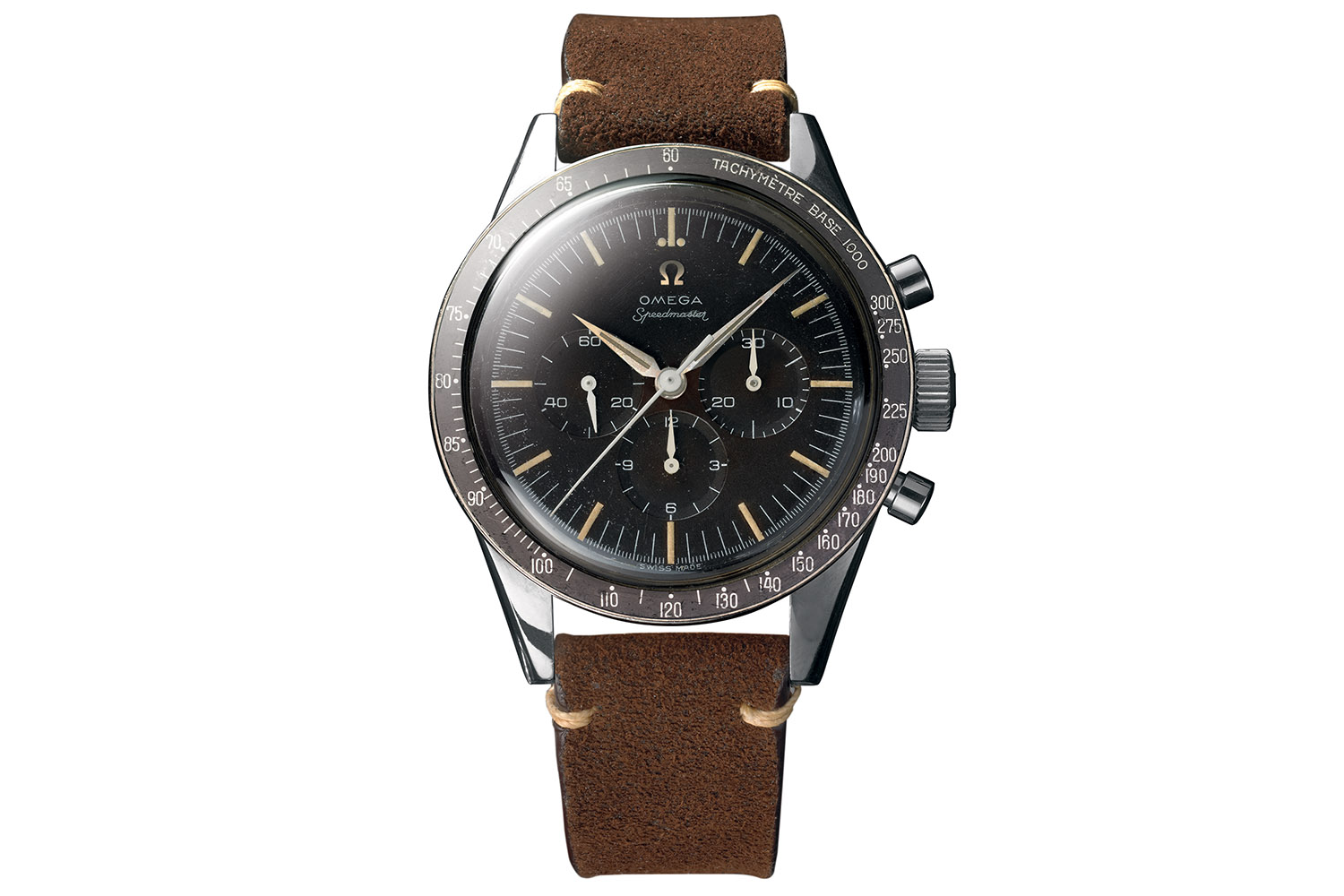
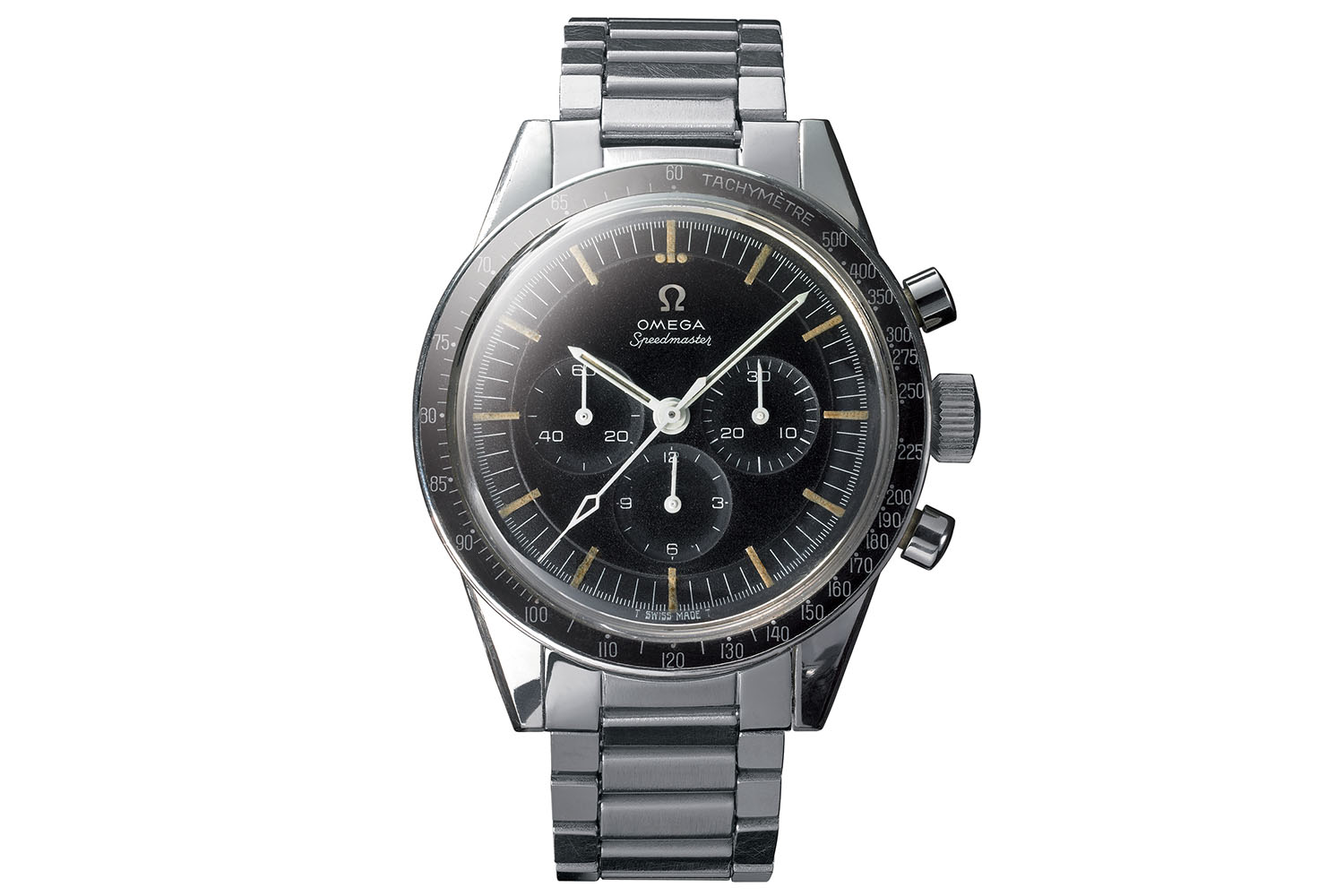
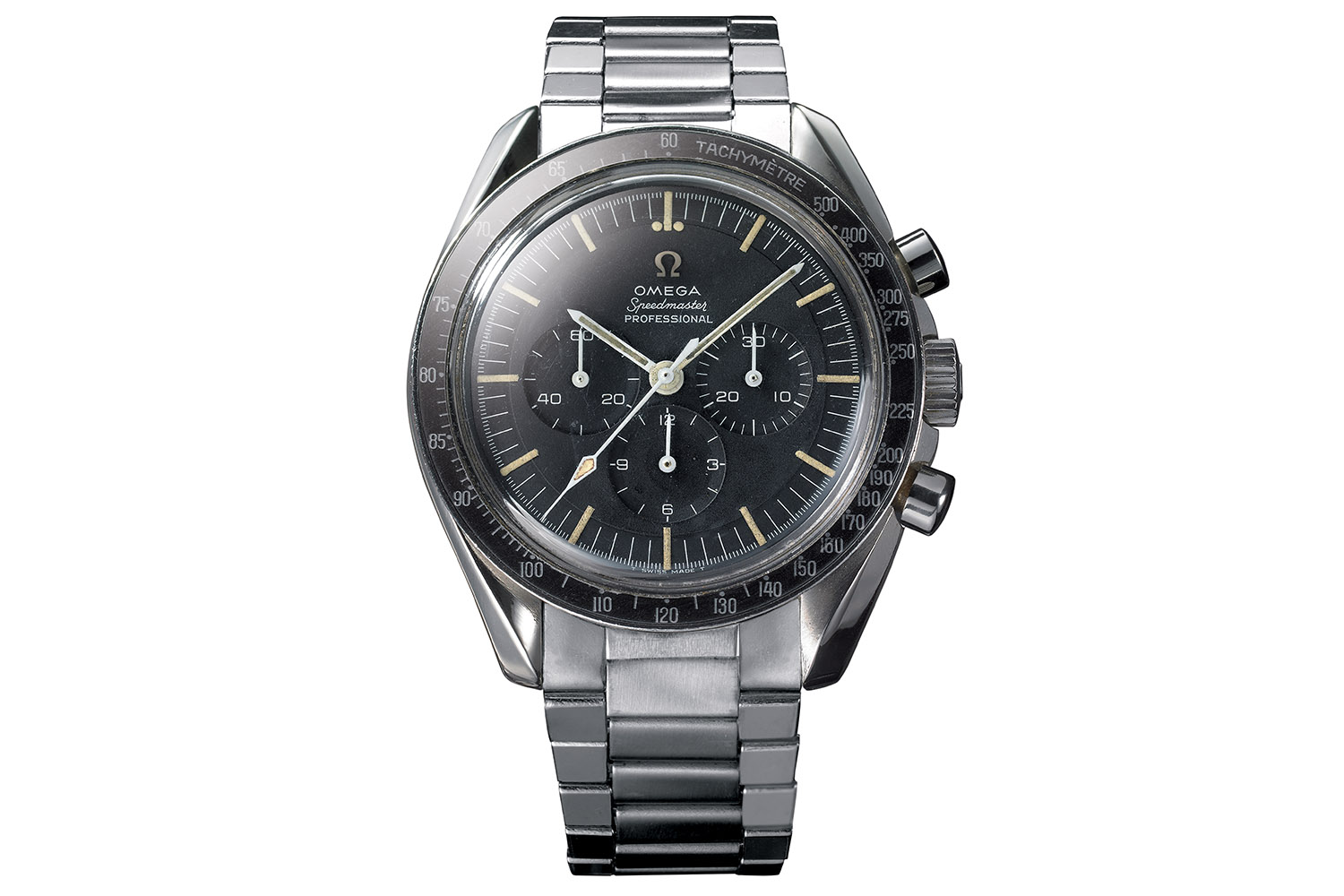

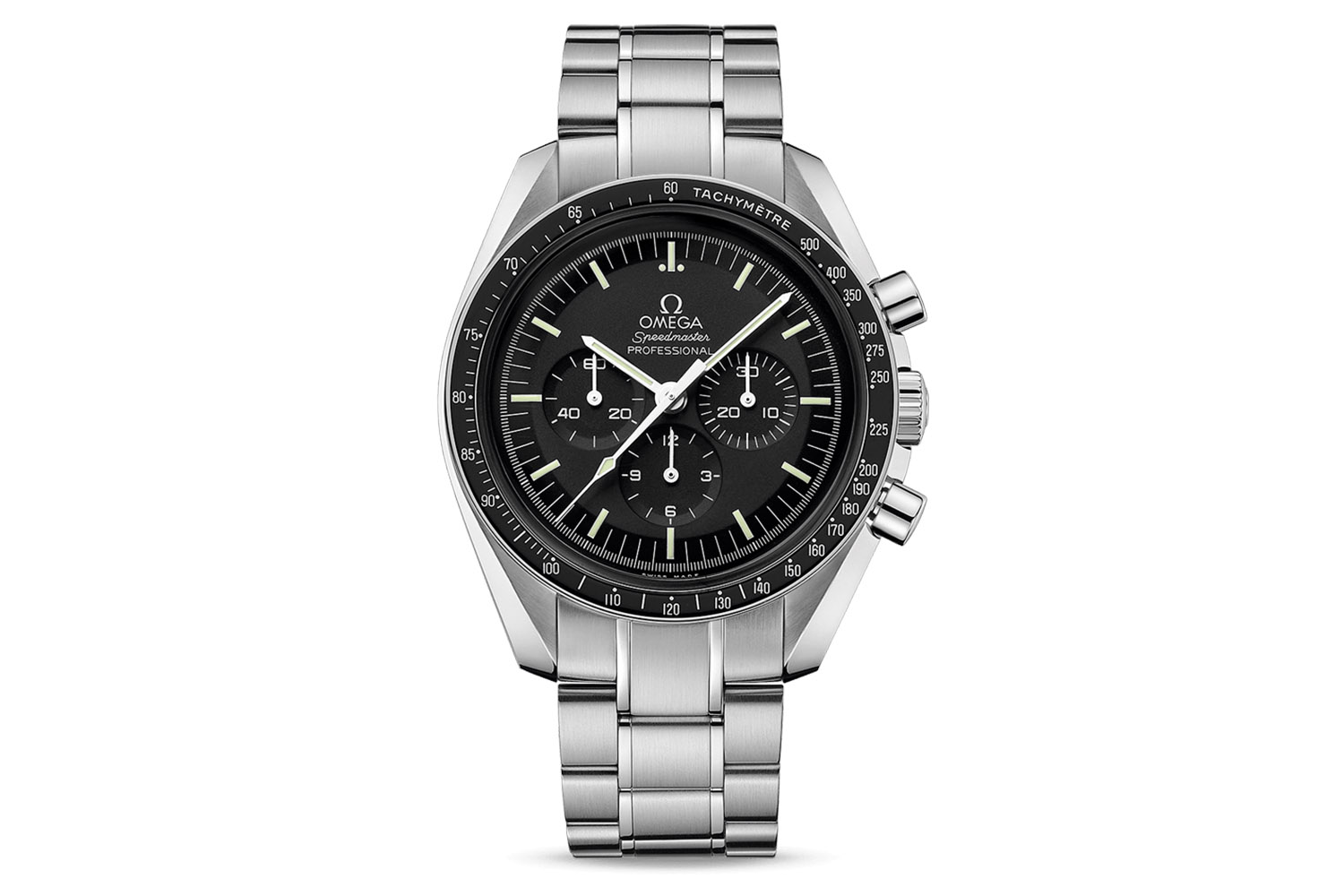



3 responses
Love my Speedy. Hopefully get the coaxial
Model soon.
Great video interviews and overview, many thanks
Extraordinary video documentary on this very fine watch, where pasion is at the heart of it, reason why its 60 years young!!!
Its visionary firms, with vision and history, as OMEGA, and people like all of those interviewed and resposible for such labor of love of making and sharing this historic brand , model and eventful moments, through the production of these videos, that make these an experience to enjoy and celebrate, in the abundance of the models simplicity, that has made it all so special…
Congratulations for taking the time and energy of making all 5 videos so outstanding, and for sharing them as has been done here…
Keep up the fine work, as the best for this iconic model is yet to come…
All those that have followed it are joined by the pasion that drives each one of us in its own way,and mysteriously shared by the watch we enjoy and wear…
Yes, the OMEGA speedmaster…
Best regards
Frank C. Stipes Esq .